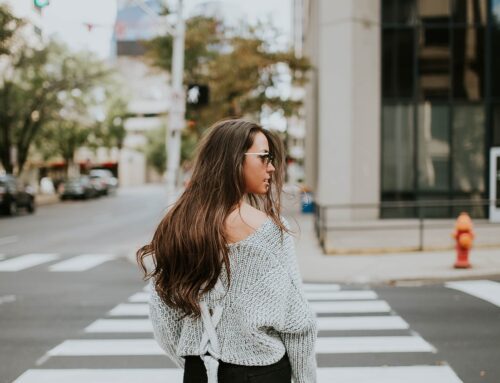Most people with car insurance have some form of underinsured/uninsured coverage. This ensures that if someone gets into an auto accident and the other person does not have adequate coverage or is not covered at all, the first person does not have to pay for damages out of their own pocket. In the case of a multiple car accident, where one person, A, is the plaintiff, and B and C are the defendants, what happens if person B isn’t underinsured, but person C is? Oftentimes, the insurer might claim that because A settled person B, the insurer does not have to pay out on the underinsured/uninsured policy, even though person C is underinsured.
To answer this question, it’s important to first look at the statute requiring Uninsured and Underinsured Motorist Coverage and the intent behind the statute, IC section 27-7-5-2. This statute provides underinsured motorist coverage must be provided at the same amount as liability coverage, meaning if the insured has $50,000.00 bodily injury liability limits, they must also have $50,000.00 in underinsured motorist coverage. Additionally, underinsured motorist coverage can’t be provided for an amount less than $50,000.00, so if the insured has $25,000.00 (state minimum) liability limits, they still have to have at least $50,000.00 in underinsured motorist coverage. As for uninsured motorist coverage, the statute simply provides underinsured motorist limits have to be provided at the same amount of liability limits. There is no minimum threshold. The courts have determined the underlying purpose of UIM coverage, which broadly stated is to give the insured the recovery he or she would have received if the underinsured motorist had maintained an adequate policy of liability insurance. Corr v. Am. Family Ins., 767 N.E.2d 535, 540 (Ind. 2002)
Armed with that basic understanding of the requirements and intent of the Underinsured/Uninsured Motorists statute, let’s get back to the issue at hand. If Plaintiff (Vehicle A) is rear-ended by both Defendant (Vehicle B) and Defendant (Vehicle C) and Plaintiff has Underinsured motorist limits of $50,000.00, Vehicle B has liability limits of $100,000.00, and Vehicle C has liability limits of $25,000.00, how much can the Plaintiff recover, from who, and why?
The answer as to how much the Plaintiff can recover is $150,000.00. The answer to from who is $25,000.00 from Vehicle C as those are their limits, $100,000.00 from Vehicle B for the same reason, and an additional $25,000.00 from their own underinsured motorist coverage, because Vehicle B was underinsured and the difference between the two policies is $25,000.00. So, we’re at a grand total of $150,000.00.
So why is this the case? Well, most insurance companies will argue that it isn’t. They’ll attempt to argue that because the Plaintiff recovered more than the limits of their Underinsured Motorist Coverage ($50,000.00) from the tortfeasors ($125,000.00), they aren’t entitled to any additional compensation. The District Court for the Northern District of Indiana in Schweihs v. State Farm Mutual Automobile Insurance Company, 2020 WL 1515087 (N.D. Ind. Mar. 30, 2020), decided the Plaintiff is entitled to the additional compensation because not doing so would go against the statutory purpose that the Plaintiff recover what he/she would have recovered if the tortfeasors maintained adequate limits (the same as the Plaintiff’s). So, the fact that one tortfeasor wasn’t underinsured, doesn’t change the fact that the underinsured motorist coverage still applies to the tortfeasor who was.
is the short answer is it depends on the language in your insurance policy regarding limits on liability in the event of an accident with an underinsured motorist. Insurance policies all contain some language in the underinsured/uninsured section that allows the insurance company to pay out on the policy only as long as there have not been payments made by another party or insurance company to set off their obligation. This limit on liability policy is even included in Indiana Statutory Code. Where an insurance policy, in the underinsured/uninsured section, uses phrases such as, “all payments”, or “on behalf of any person or organization”, a court will generally find the language to be unambiguous.
So Why do Insurance Companies Make This Argument?
In short, because previous caselaw allowed them to still does where the newly decided Schweihs case isn’t binding. All insurance policies have setoff provisions and reduction of liability provisions that often state the limits of liability are to be reduced by all or any payments made. Insurance policies also have nonduplication clauses that state that an insurance company will not pay damages that have already been paid out by a liability policy under the same insurance company, and limits clauses that state how much the insurance company will pay before they stop paying. The enforceability of these clauses, however, turns on their ambiguity, and the intent of the statute.
As set out by our courts, insurance policies are to be read and applied in favor of the insured, as the person buying the insurance is not the person writing up the contract. If an insurance contract contains phrases such as, “by on or behalf of persons”, the contract is more ambiguous, and the liability provision may be too ambiguous so as to make the insurer pay the underinsured/uninsured policy or make up the difference between the policy amount and what has already been paid by the underinsured/uninsured motorist.
Oftentimes the wording of a limits clause or a nonduplication clause seems to apply to the person or persons in an underinsured/uninsured vehicle, as opposed to the person or persons in the insured vehicle. This is where the ambiguity comes into play. Because insurance contracts are to be read from the perspective of an average policyholder, courts can determine whether the contract would seem to have different meanings to said person.
Insurance policies are contracts, and the goal of an underinsured/uninsured policy is to put the policy holder in as good a position as they would have been had the other party been fully insured. This means that our courts have favored insurers paying the full value of an underinsured/uninsured policy.
To answer the question of what would happen to you in a multi-car accident with an uninsured defendant, you should carefully read through your underinsured/uninsured motorist policy, and see if it contains certain words or phrases that allow for an insurance company to protect itself. If the words and phrases in the contract can be read in different ways by two different people, it is likely ambiguous, and the insurer would still have to pay out underinsured/uninsured benefits. Even if the language is unambiguous, any setoffs that go against the decision in Schweihs likely goes against what the statute intended and are therefore void.





